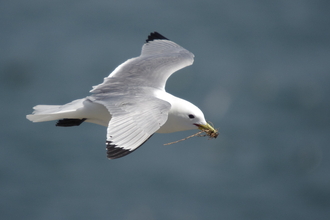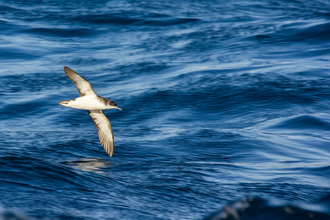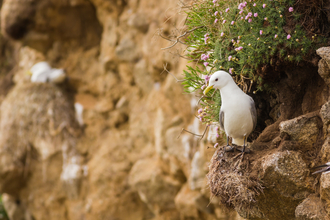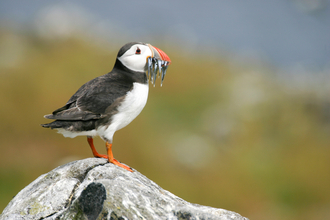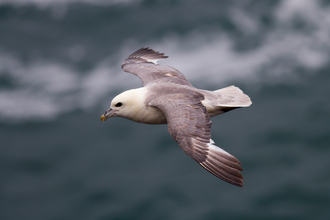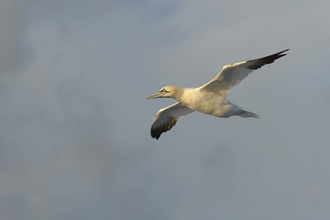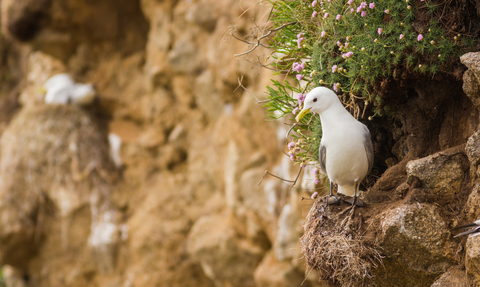
Kittiwakes (c) Ed Marshall
Kittiwake
Kittee-wa-ake calls
Kittiwakes are medium-sized gulls with a gentle appearance. This seabird has a plush white head and body, their grey wings frosted with solid black as though dipped in ink. Their legs are pure black, and their beaks are short and yellow. They have an onomatopoeic name, too, as they call kittee-wa-ake from their cliffside nests.
If you are lucky enough to see a kittiwake up close, you will notice the rich, red colour inside their mouths, another characteristic feature of this species.
Kittiwakes spend the winter months at sea and rarely touch the ground during this period, making them our most sea-loving gull. In the winter, many hundreds of them gather off Scilly, especially in strong winds. You might spot them skimming over the waves or diving into the sea for small fish. They are a true pelagic seabird, spending most of entire lives away from land.
In the summer, they nest on the rocky cliffs. In big seabird colonies, they form dense, noisy groups that echo with continuous cries. Kittiwakes form monogamous pairs and share the care of the chick equally. Both parents take part in building the nest, incubating the egg, and rearing. Studies show that established pairs have a better chance of successfully rearing a healthy chick. Unlike other gulls, the kittiwake does not scavenge, instead catching fish, shrimp, and worms.
In recent years, the sub-colonies of kittiwakes around the Isles of Scilly have gradually been lost, with just one group remaining in 2020. The island of Gugh, which is attached at low-tide to the bigger island of St Agnes, has previously hosted several nests of kittiwakes, but in 2021 there was a complete absence of nests from these special seabirds across the whole Isles of Scilly. This was the first year that kittiwakes completely failed to nest on the Isles of Scilly, down from 266 pairs in 2006, just 15 years previously.
The most recent nesting attempts have given hope; however, the situation for this species is critical, and we could be facing a local extinction in the next few years. Kittiwakes are an IUCN Red-Listed species showing an alarming drop in numbers. Globally, the species is thought to have declined by around 40% since the 1970s. Elsewhere, for example in Orkney and Shetland, the birds have declined by 87% since 2000, and on St Kilda as much as 96% of the breeding population has been lost.
Climate change is perhaps the biggest threat to our seabirds. It is suspected that warming seas are changing the behaviour and availability of small fish species like sand eels, making it much harder for adult birds to find food. Kittiwakes, and other species like terns, are key barometers of ocean health; when their populations crash, we know that something is badly wrong. Smaller populations are more vulnerable overall, so are less resilient in the long term against bird flu, predation or disturbance, but the real threat to many island seabird populations is undoubtedly climate change.
Find out more
The Isles of Scilly are famed for their amazing marine life. Find out more about kittiwakes nationally and other seabirds you can find on Scilly...

